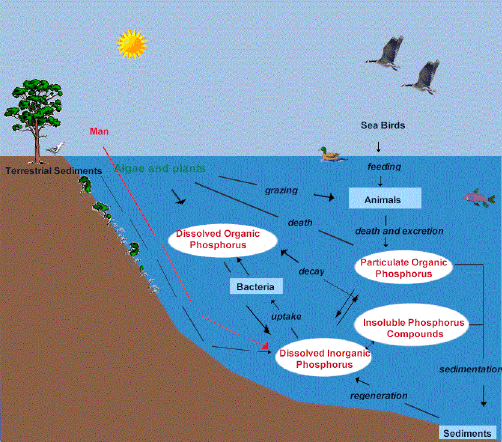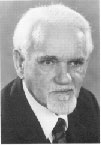Disclaimer & Copyright Notices; Optimized for the MS Internet Explorer

Management of Phosphorus
(Discussions on the Canadian Council of Ministers of the Environment (CCME), and Environment Canada documents)
Soil & Water Conservation Society of Metro Halifax (SWCSMH)
Updated: August 12, 2015 
Acknowledgements
Contents:
Preamble
Significant parts of the federal policy have
been familiar for considerable years to those of us who are practicing
`applied limnologists'; in addition, it does not cover the entire
spectrum of related published literature but it does give some updates.
We are indeed quite excited that this overdue policy has finally been
adopted by the CCME thus giving some of the extensively published
literature a national stamp of approval!
CCME's `no degradation policy'
"It is stressed at this point that the CCME
endorses a no degradation policy, and that these values therefore do
not provide, and must not be used as pollute up to levels!" (cf. pg. 56, Environment Canada, 2004)
Overview
"The approach accommodates the non-toxic
endpoints associated with phosphorus and can be incorporated into
existing management strategies. The framework offers a tiered approach
in which (i) phosphorus concentrations should not exceed predefined
`trigger ranges'; and (ii) phosphorus concentrations should not
increase more than 50% over the baseline (reference) levels. The
trigger ranges are based on the range of phosphorus concentrations in
water that define the reference trophic status for a site."
Trigger ranges:
Trigger ranges of TP based on trophic classification of lakes and rivers derived from the OECD research; cf. Table 4.3, pg. 55, Environment Canada, 2004
--- (may not apply to dystrophic lakes)
| Trophic level | Trigger Ranges for Total Phosphorus
(µg/l) |
|---|
| Lakes | Rivers and streams |
|---|
| Ultra-oligotrophic | < 4 | - |
| Oligotrophic | 4-10 | < 25 |
| Mesotrophic | 10-20 | 25-75 |
| Meso-eutrophic | 20-35 | - |
| Eutrophic | 35-100 | > 75 |
| Hypereutrophic | > 100 | - |
cf. pg. 62
"TP, TN, chlorophyll a,
and Secchi depth must all be considered when modelling lakes and
reservoirs. It is advised that additional variables to these also be
considered."
.... derived from the OECD research
![[Img-ccme_trophic_lakes.jpg]](../../../TPMODELS/NOTES/PIC/ccme_trophic_lakes.jpg)
![[Img-ccme_trophic_rivers.jpg]](../../../TPMODELS/NOTES/PIC/ccme_trophic_rivers.jpg)
When modelling shallow lakes
(i.e., lakes which are completely mixed, and in which light penetrates
to the bottom sediments), sediment phosphorus plays an important role
in phosphorus cycling and should also be considered. Benthic and
sestonic chlorophyll a also needs to be considered for these systems."
 Severe shortcomings of the Fixed Boundary approach; prefrred methodlology are the OECD (Organization for Economic Co-Operation and Development)'s Probability Distribution Diagrams!
Severe shortcomings of the Fixed Boundary approach; prefrred methodlology are the OECD (Organization for Economic Co-Operation and Development)'s Probability Distribution Diagrams!
![[Img-ccme_eutro1.jpg]](../../../TPMODELS/NOTES/PIC/ccme_eutro1.jpg)
![[Img-ccme_eutro2.jpg]](../../../TPMODELS/NOTES/PIC/ccme_eutro2.jpg)
Prologue

Vollenweider's dictum- the OECD Probability Distribution Diagrams:
Notwithstanding the above fixed boundary of the CCME which was adapted from the fixed boundary of the OECD (1982), listen to his 4-minute mp3 sound file emphasizing the value of the OECD Probability Distribution Diagrams in order to establish trophic states with a high confidence level!
Vollenweider was the first of four in Canada to have ever received the Naumann-Thienemann Medal, the highest honour that can be bestowed internationally for outstanding scientific contributions to limnology!
The CCME's trophic standards were derived from the 14-year, 18-country, OECD research headed by Richard Vollenweider!
Narrative on predictive modelling:
Firstly, an assessment has to be made of the
recent data in comparison with a lake's modelled natural background (+
direct aerial deposition) TP (total phosphorus) value.
The assessment should also take into account the predictive TP modelling
based on future land use patterns as the Future Probable and as the
Future Ultimate values depending upon the urban export coefficients
utilised; assumption to be based on typical urban stormwater discharge
practices.
Stormwater treatment:
But the high values resulting from the
Predictive TP Modelling based on future scenarios can perhaps be
minimized by mandating almost ZERO phosphorus export through a
combination of total stormwater treatment as well as through sound stewardship practices!
Total stormwater treatment should also include removal of other inevitable urban stressors as well, not just phosphorus!
Indicator thresholds for anthropogenic stressors:
Comparisons could also be made with the
indicator thresholds for anthropogenic stressors of lakes, freshwater
and dystrophic (colour ≥ 30-35) as the case may be (after Mandell, 1994)! The anthropogenic stressors cover several parameters over and above TP!
![[Img-mandell_reference.jpg]](../../../WATERSHEDS/PIC/mandell_reference.jpg)
Acknowledgements
Salutations to Sushil S. Dixit PhD and
associates at the National Guidelines and Standards Office Water
Priorities Branch, Water Policy and Coordination Directorate,
Environment Canada for all their utmost cooperation.
The source of the phosphorus cycle is the Central Michigan University.


We salute the Chebucto Community Net (CCN) of Halifax, Nova Scotia, Canada for hosting our web site, and we applaud its volunteers for their devotion in making `CCN' the best community net in the world!

![[Img-ccme_trophic_lakes.jpg]](../../../TPMODELS/NOTES/PIC/ccme_trophic_lakes.jpg)
![[Img-ccme_trophic_rivers.jpg]](../../../TPMODELS/NOTES/PIC/ccme_trophic_rivers.jpg)
![]() Severe shortcomings of the Fixed Boundary approach; prefrred methodlology are the OECD (Organization for Economic Co-Operation and Development)'s Probability Distribution Diagrams!
Severe shortcomings of the Fixed Boundary approach; prefrred methodlology are the OECD (Organization for Economic Co-Operation and Development)'s Probability Distribution Diagrams!![[Img-ccme_eutro1.jpg]](../../../TPMODELS/NOTES/PIC/ccme_eutro1.jpg)
![[Img-ccme_eutro2.jpg]](../../../TPMODELS/NOTES/PIC/ccme_eutro2.jpg)
![[Img-mandell_reference.jpg]](../../../WATERSHEDS/PIC/mandell_reference.jpg)